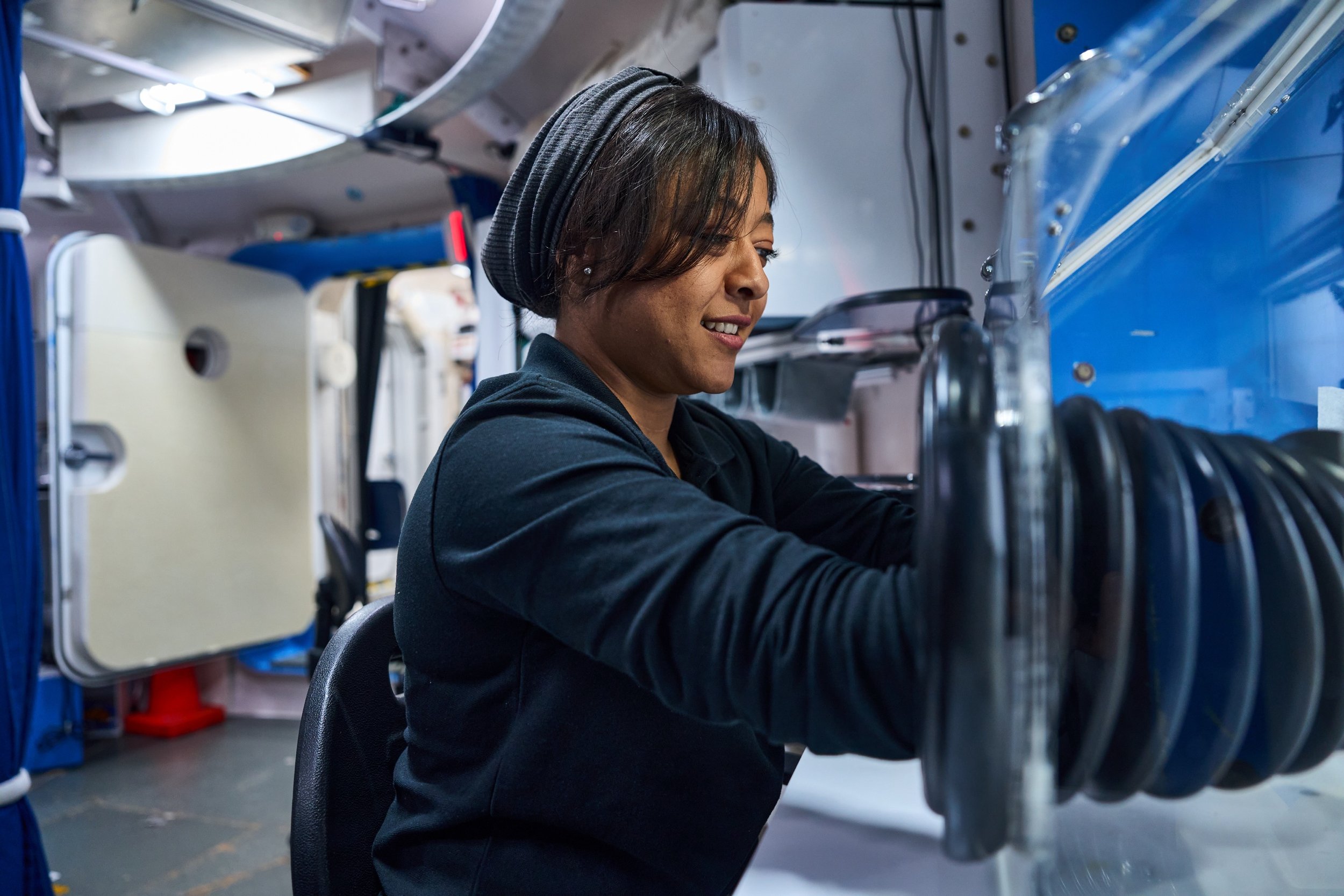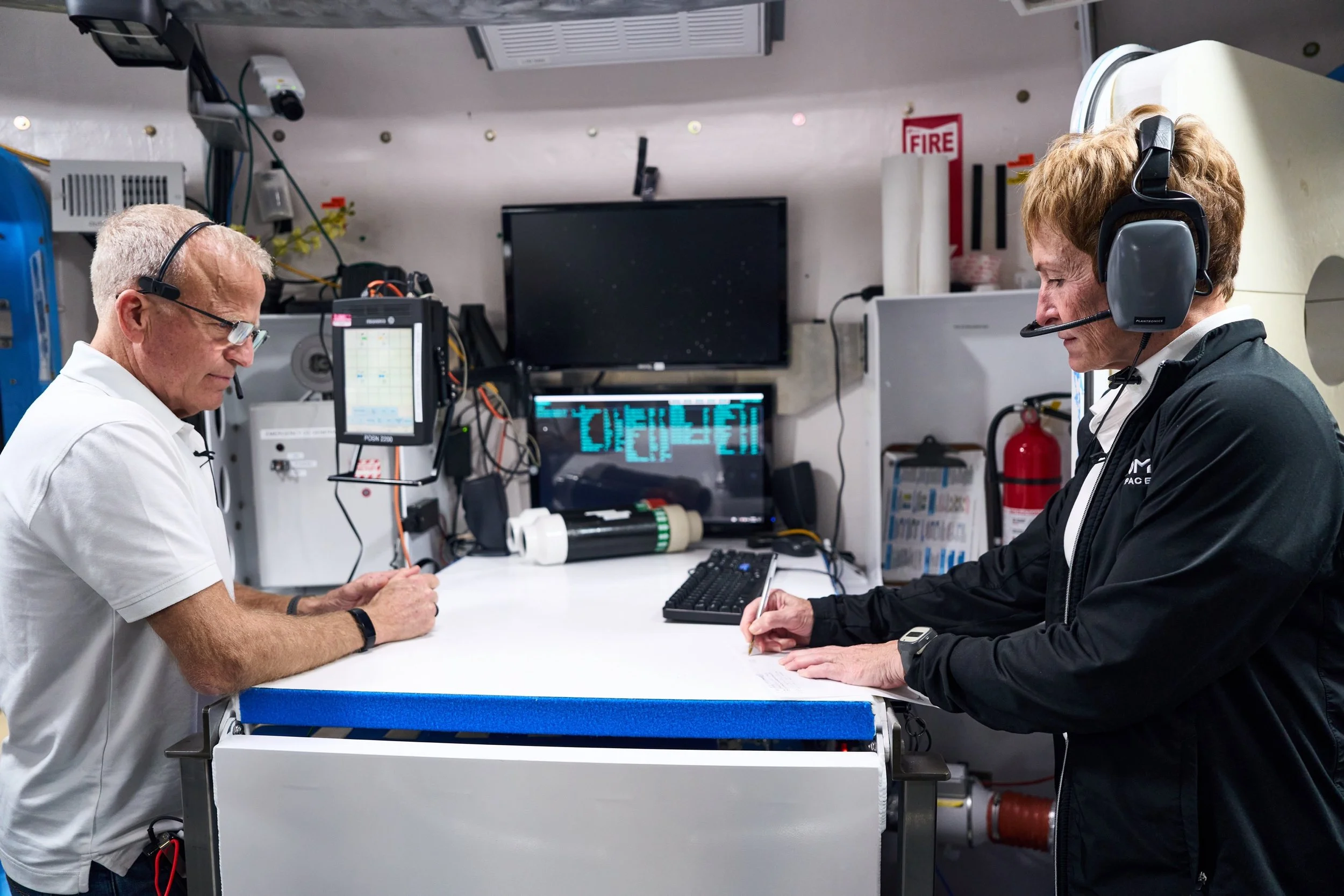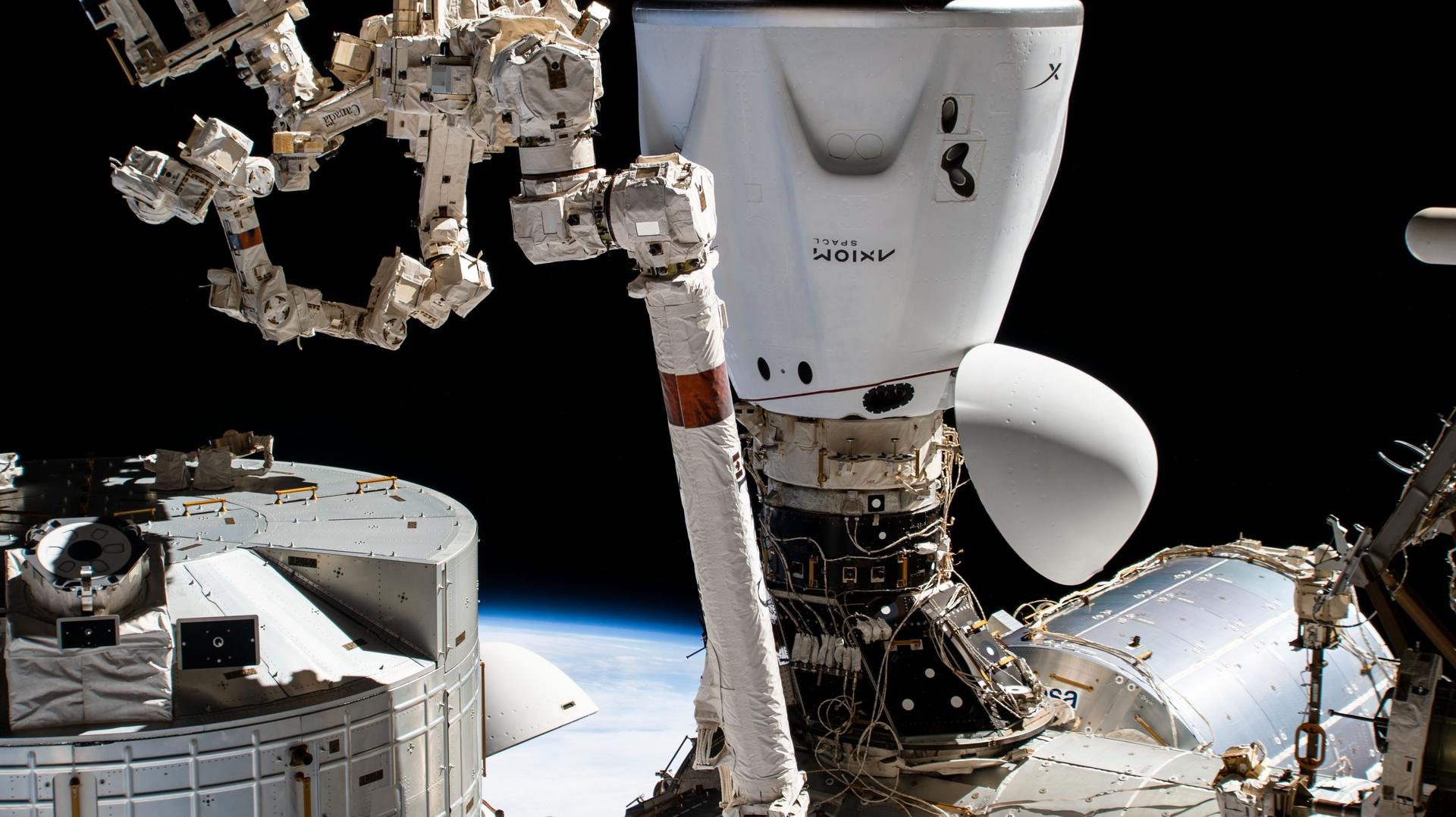Credit: Nanoracks | Liquid Fireworks Flight Hardware
During Axiom Mission 2 (Ax-2), the crew will dedicate time engaging with students, educators, and the public about the importance of science, technology, engineering, the arts, and math (STEAM). The Ax-2 crew will conduct a series of science investigations and demonstrations while working with students on Earth, including through amateur radio, a student art competition from space, educational kits, and engaging in student-led projects with universities like MIT.
The Ax-2 crew hopes to inspire youth around the world to pursue opportunities in space and educate them through STEAM demonstrations while aboard the International Space Station (ISS).
Amateur Radio on the International Space Station (ARISS)
ARISS inspires students worldwide to pursue interests and careers in STEAM through amateur radio contact opportunities with the crew on the ISS. The primary goal of ARISS is to promote exploration of STEAM topics by organizing scheduled contacts via amateur radio between crew members aboard the ISS and students in classrooms or public forums.
During Axiom Mission 2 (Ax-2), the crew will conduct ISS HAM Radio contacts with students around the world utilizing ARISS. Every ARISS amateur radio connection with an on-board astronaut is a hands-on experiment for the youth, educators, and public that participate. Prior to the event, the students research and learn about space, space technologies, Earth observation from space, ISS orbits, wireless technology, and radio science. Through research and communications with the crew on ISS, students will learn firsthand what it is like to live and work in space.
DreamUp Education Kits
In collaboration with the Saudi Space Commission and Nanoracks
DreamUp provides space-based educational programs to learners and educators around the globe. During the Ax-2 mission, DreamUp, in collaboration with the Saudi Space Commission and Nanoracks, will fly three experiments to be conducted in microgravity to educate students. These visual experiments will demonstrate differences in fluid behavior on Earth and in microgravity, explore the aerodynamic behavior of different kite shapes on the ISS, and showcase the effects of the external environment of space has on the available modes of heat transfer. During a live event with the Saudi crew, thousands of students across the Kingdom of Saudi Arabia tuning in from home and 47 official event viewing sites will participate in ground-based experiments on Earth to gather comparison data with custom-built DreamKits and, in the case of Space Kites, the general public can gather their own data using household materials and instructions provided by DreamUp and the Saudi Space Commission.
Liquid Fireworks
During Ax-2, there will be a “liquid fireworks” payload that will aim to demonstrate differences in fluid behavior on Earth and space through a visual experiment that students will recreate on the ground. In low-gravity environments, the fluids of differing viscosities and polarity will produce different results than on Earth. To execute this experiment, the Saudi crew will inject fluids and mix components into a custom-designed apparatus designed by Nanoracks.
Space Kite
The Space Kites payload aims to explore the aerodynamic behavior of kites in a microgravity environment. Three kites of different shapes will be fixed to a fan on the ISS and their movement will be tracked. The Saudi crew will host a live event with the students during which they will take videos of the experiment to share with thousands of students on the ground as part of the Saudi education outreach program in collaboration with DreamUp. Students will replicate the experiment on Earth and learn about aerodynamics. Analysis on the ground will be performed to compare the kites’ performance in space and on Earth.
Credit: DreamUp | Student Kit
Credit: Nanoracks | Flight Hardware
Heat Transfer
This experiment will demonstrate the effects of the external environment of space on heat transfer by monitoring the heat transfer of a wire as it heats and cools. Students will compare how heat transfer of the experiment on the ISS differs from control experiments that students will perform on Earth. Within special hardware, crew will take videos and perform a live event while conducting the experiment, which will be replicated by students on Earth. The heat transfer payload will mimic the external environment of space by maintaining a vacuum on the heated wire to showcase the difference in the modes of heat transfer available in space in comparison to Earth.
Credit: Nanoracks | Flight hardware
Humanity United with MIT Art and Nanotechnology (HUMANS)
In collaboration with the MIT Space Exploration Initiative
When The Golden Record was sent out on Voyager spacecraft to portray Earth for extraterrestrials in 1977, it told a story of the diversity of lives and cultures on our home planet. Today, after a pandemic that hit all of us around the globe, ongoing conflicts and wars all around our planet, humanity needs unity more than ever. We wish to send a new "Record of Our Voices" to the ISS. This time, the story is not for extraterrestrials, but for us.
HUMANS is an MIT student-led project that combines art and nanotechnology for increasing global representation in space. HUMANS has created a record of voices from people all around the world in their native languages, sharing their thoughts on the meaning of space for themselves and humanity. Inspired by The Golden Record, a six-inch silicon wafer has been etched using cutting-edge MIT nanotechnology and will be launched up to the ISS on Ax-2. Separately, a smaller 2" version will travel the surface of the Moon with the MIT Space Exploration Initiative’s “To The Moon To Stay” program. HUMANS creates a symbolic avenue for space access worldwide and emphasizes how space should remain a “space" for everyone. For more information, visit https://humans.mit.edu
Credit: MIT Space Exploration Initiative
Student Space Art and Poetry Contest
During Ax-2, student art and poetry will take center stage with the Space Art and Poetry Contest, hosted by Ax-2 pilot John Shoffner. Over 900 students from 26 countries showcased vivid color and curiosity, taking us on a journey into space as they envision it. Two representatives from each age division, one art and one poetry, will receive special recognition LIVE from the ISS on the Ax-2 mission. John’s story is one that proves dreams never fade and creativity knows no limits. For more information, visit www.spaceartcontest.com.












































